Air transport has radically evolved over the last two decades. Liberalisation and deregulation of the sector have facilitated the entry of new firms, which in turn has had a positive impact on competition and innovation. Deregulation and liberalisation also significantly altered market structure, giving rise to mergers of flag airline carriers and diverse forms of collaboration.
From the demand side, there are three factors passengers are looking for; safety affordability and quality of service. While it is true that according to statistics from the United States government, flying on a plane on average is overwhelmingly safer than driving a car, it is also true that there have been a number of dramatic air travel incidents in recent times, from the downing of Malaysia Airlines Flight MH17 over the Ukraine, which killed 298 people, to a crash in Taiwan that killed at least 48 and the disappearance and likely crash of an Air Algerie plane carrying 116 people, and so on. For that reason, an aviation company must above all concentrate on the safety of its flight. But that is not enough, the quality of services in the long run is also a key determining factor for the survival of a company.
It’s, of course. rational to expect that one has to pay extra for higher-quality products or services. But this fact cannot be abused. While it’s reasonable for clients to expect to pay the lowest possible price for whatever they want or need to buy, it is also reasonable for producers to satisfy those expectations by trying to minimize their costs -- by adopting technological advances and better management techniques. However, some shortsighted airlines have tried to face these expectations in a different way. They use “calculated misery” to make their baseline products and services so low-quality and unpleasant that many passengers will be willing to pay more to avoid them. Obviously this may be a good strategy only in a very short terms, but as soon as competitors find a way to produce the same services at lower costs the game for those kinds of strategy would be over.
The role of visual communications and logo in the airline industry is to communicate a company's vision and efforts in maximizing flight safety and comfort. Like banks, airlines are generally conservative and as far as their branding strategy is concerned they follow a kind of herd mentality. That is why one sees a general tendency to symbolize flying with stylized birds or the use of seemingly aerodynamic curves that resemble wings or swishing movements. The fonts are usually various variations of sans serif and a clear preference towards reds and blues. However, it is clear that the elegance of a logo in terms of its artistic quality and its tasteful composition as well as its balance constitute the starting point of the effective communications. With so many airlines to choose from, branding is extremely important and at its core lies logo design. An airline that is sloppy with its choice of logo cannot be trusted, no matter if it employs the strongest tag line about its safety and comfort.
It has been argued by some that the two most common colours used in airline logos are blue and red, because blue is supposed to convey a sense of calm and trustworthiness and red a sense of bold strength. This is, of course, a highly questionable assertion. Blue may convey a sense of calm, but also it my provoke a sense of fear or sadness. Red can also covey various types of feelings such as anger, happiness, or cruelty depending on observer's conditions and artists intentions. Lufthansa's logo, for example, up to 2018, was a dark blue flying crane encircled in a yellow background, Alitalia's logo is in the colours of Italy's flag, while the Irish airline, Aer Lingus, is green. All these airlines have excellent reputations in safety and comfort. The idea that "the two colors red and blue balance each other well" is also somewhat inaccurate. The interactions of the two colours are highly associated with the quality of design.
From the demand side, there are three factors passengers are looking for; safety affordability and quality of service. While it is true that according to statistics from the United States government, flying on a plane on average is overwhelmingly safer than driving a car, it is also true that there have been a number of dramatic air travel incidents in recent times, from the downing of Malaysia Airlines Flight MH17 over the Ukraine, which killed 298 people, to a crash in Taiwan that killed at least 48 and the disappearance and likely crash of an Air Algerie plane carrying 116 people, and so on. For that reason, an aviation company must above all concentrate on the safety of its flight. But that is not enough, the quality of services in the long run is also a key determining factor for the survival of a company.
It’s, of course. rational to expect that one has to pay extra for higher-quality products or services. But this fact cannot be abused. While it’s reasonable for clients to expect to pay the lowest possible price for whatever they want or need to buy, it is also reasonable for producers to satisfy those expectations by trying to minimize their costs -- by adopting technological advances and better management techniques. However, some shortsighted airlines have tried to face these expectations in a different way. They use “calculated misery” to make their baseline products and services so low-quality and unpleasant that many passengers will be willing to pay more to avoid them. Obviously this may be a good strategy only in a very short terms, but as soon as competitors find a way to produce the same services at lower costs the game for those kinds of strategy would be over.
The role of visual communications and logo in the airline industry is to communicate a company's vision and efforts in maximizing flight safety and comfort. Like banks, airlines are generally conservative and as far as their branding strategy is concerned they follow a kind of herd mentality. That is why one sees a general tendency to symbolize flying with stylized birds or the use of seemingly aerodynamic curves that resemble wings or swishing movements. The fonts are usually various variations of sans serif and a clear preference towards reds and blues. However, it is clear that the elegance of a logo in terms of its artistic quality and its tasteful composition as well as its balance constitute the starting point of the effective communications. With so many airlines to choose from, branding is extremely important and at its core lies logo design. An airline that is sloppy with its choice of logo cannot be trusted, no matter if it employs the strongest tag line about its safety and comfort.
It has been argued by some that the two most common colours used in airline logos are blue and red, because blue is supposed to convey a sense of calm and trustworthiness and red a sense of bold strength. This is, of course, a highly questionable assertion. Blue may convey a sense of calm, but also it my provoke a sense of fear or sadness. Red can also covey various types of feelings such as anger, happiness, or cruelty depending on observer's conditions and artists intentions. Lufthansa's logo, for example, up to 2018, was a dark blue flying crane encircled in a yellow background, Alitalia's logo is in the colours of Italy's flag, while the Irish airline, Aer Lingus, is green. All these airlines have excellent reputations in safety and comfort. The idea that "the two colors red and blue balance each other well" is also somewhat inaccurate. The interactions of the two colours are highly associated with the quality of design.

Four liveries adorned Alaska’s jets from 1972 until 1976 – a totem pole, to represent the native culture of Southeast Alaska; a gold miner, to represent the booming gold rush days in Alaska; Russian spires, to represent early Russian heritage in the state of Alaska; and a native Alaskan adorned in a traditional qulittaq (parka with ruff) to represent the Arctic region and its people. Indigenous Alaskans in the Arctic, traditionally of Inupiat or Yupik descent, commonly refer to themselves as Eskimo. In 1976, the company adopted the Eskimo tail fleet-wide, and updated the face to be less stern. The adoption of the four-logo scheme was a bold move for an airline in 1972, and a drastically different look for the 50-year old company.
AeroMexico's logo Eagle Knight emblem, inspired by the ancient culture of the country symbolizing courage, leadership, and fearlessness . The Eagle Knights were an elite class of Aztec warriors, known for their fearlessness and heroism. The logo has been rebranded and modernized.
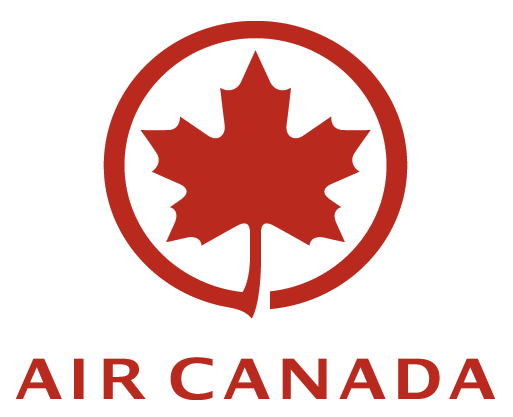 |
Air Canada, founded in 1937 as Trans-Canada Air Lines (TCA), a name it kept using until about fifty years ago when the current name was adopted. Air Canada was originally the French name for the airline, used in conjunction with the TCA moniker for several years until the latter was dropped in 1964. Air Canada contracted Stewart Morrison Roberts (later known as Stewart & Morrison), to develop a modern identity draped in the national colours, red and white. The logo, an encircled maple leaf was designed by Hans Kleefeld, a German-born graphic designer who was creative director at SMR at the time. The logo has been redesigned couple of times, first in 1993 by Diefenbach Elkins who would later become part of Futurebrand who created the current version in 2004.
Russian national carrier Aeroflot founded in Soviet era in 1923, and it has kept its distinctive hammer and sickle logo from that era . Its current livery of red, blue and white however is replaced for blue, orange and silver, with a stylish Russian flag draped across the tail. The company is reluctant to rebrand its 70-year old hammer and sickle symbol. "This is an old Russian brand, which everyone associates with Aeroflot. This logo is so harmonious that is has proved difficult to replace," Aeroflot's deputy director general, Lev Koshlyakov, told the French news agency AFP.
Established in 1946 Alitalia is the flag carrier and national airline of Italy. Alitalia introduced a new logo and livery in 2015 designed by Landor, the same company that designed its identity in 1969. In its press release Landor stated:
By increasing the number of primary colour tones used on the logo’s palette, the modernised livery now portrays greater depth and richness. Inspired in part by the striking lines on Formula 1 racing cars, striations have been added to the red triangular interior of the Alitalia “A,” creating a pinstripe effect which reflects exclusivity, attention to detail, and a strong focus on design.
“What are the things that are relevant from all over the world about America?” Rob Friedman, VP of marketing asked the design team. The old identity was slightly skewed to a more powerful American image. “Technology. Entertainment. Progress. These things people really feel are American attributes,” Futurebrand’s Chief Creative Officer Sven Seger later answers. “We didn’t make this up. It’s from people all over the world. (...) The old identity was slightly skewed to a more powerful American image. We needed to move it to, we call it ‘American spirit.’ What’s the side of America people really, really love,” According to Seger: “People have huge love for the eagle, but not necessarily the eagle in the downward position potentially attacking someone.” So AA kept the eagle, but it ditched the talons and transformed it into the Flight Symbol. It’s both a bird and a wing. But instead of being focused on the hunt, it’s focused on the fligh.
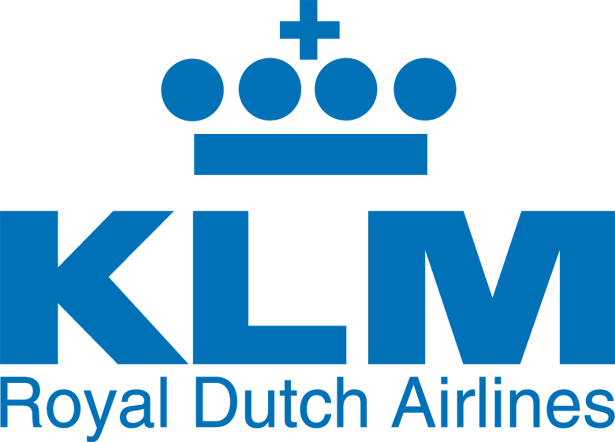
After the Iran National Airline was registered as a national company, it officially started under the acronym "HOMA," made by combining initial letters of the Persian phrase. For both brevity and clarity, Iran National Airline changed to IranAir. To choose the logo, a logo competition announcement appeared in Kayhan and Ettelaat newspapers in 1961. Judges came from the College of Fine Arts.
Inspired by an image atop one of the columns at Persepolis, a young Iranian's sketched the competition's winning image. Edward Zohrabian was only 22 when he drew the well enduring logo of the Airline of the Islamic Republic of Iran by drawing upon a series of ancient Iranian motifs. His most significant inspiration was Homa, the Persian mythological griffin, which can be found in prosperous Persepolis and described in the books of R. Grishman, the famous French archeologist who specialized in ancient Iran.
The griffin atop the Persepolis column has three distinct characteristics: an eagle's head, a cow's ears and a horse's mane. Without legs, according to some accounts, the griffin never rests, living its entire life flying invisibly high above the earth, and never alighting on the ground. The color offered by the designer was turquoise.
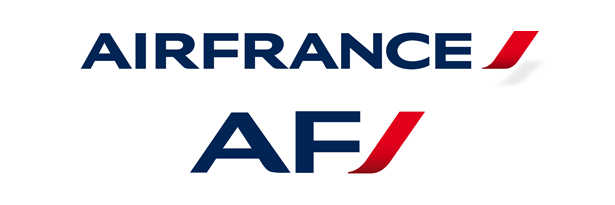
The French national carrier, Air France was formed in 1933 from the merger of various airlines. The company adopted the logo of Air Orient, a hippocampe ailé (winged sea-horse), which has served as the icon for Air France and its parent company on and off through the years. Since then, Air France has become one of the biggest and most recognized airlines in the world. Air France launched a new, updated logo in 2009. The new logo shows the airline’s name written as one word in navy blue, with light and elegant typography with a read flourish to the right. The new identity, replacing its last update since 1975, was designed by Brandimage.
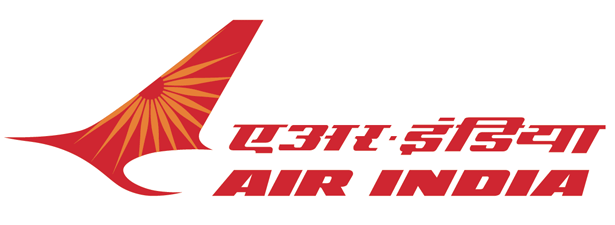
The Air India logo designed by Arnab Roy for DMA Branding is a red coloured flying swan with the 'Konark Chakra' in orange, placed inside it. The flying swan has been morphed from Air India's characteristic logo, 'The Centaur', whereas the 'Konark Chakra' is reminiscent of Indian's emblem. The new logo features prominently on the tail of the aircraft. While the aircraft is ivory in colour, the base retains the red streak of Air India. Running parallel to each other are the orange and red speed lines from front door to the rear door, subtly signifying the individual identities merged into one. The brand name 'Air India' runs across the tail of the aircraft
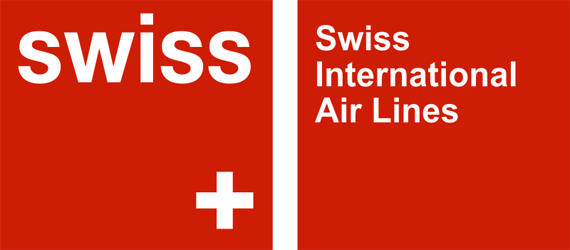

In 1930s Swissair did not have standardised Logos, but rather many different ones. They also were not always swissair, but wore different titles such as Swiss air Lines, Switzerland etc. In the 1940's it started having a standard logo of Swiss Air Lines on its Airoplanes. In the early 1950s Ruedi Bircher designed the Swissair Arrow with a new font. In the mid 1950's Swissair changed it's Arrow logo. The Word 'Swissair' was no longer in the arrow but separate and the arrow was all-red. In 1981 Swissair turned 50 and gave itself an new, more modern logo and livery, but the company was not so strict about the logo and many different variants appeared. With the formation of the SAirGroup a new logo was created in 1997. However, in 2001 the SAirGroup logo and the Name of the company were formally changed back to Swissair Group.
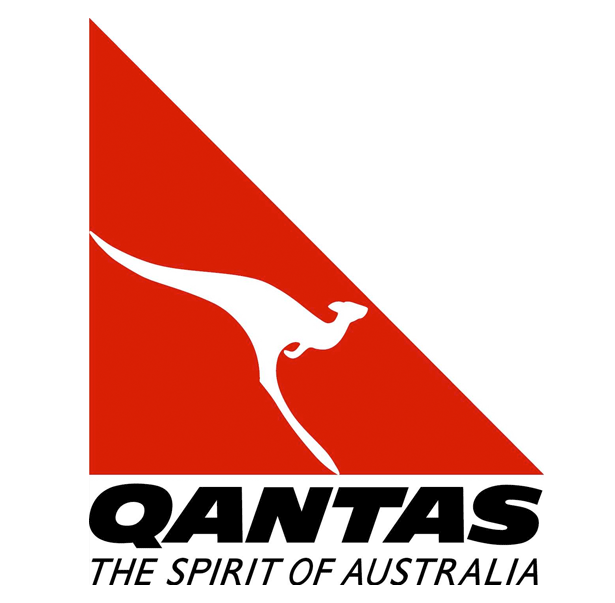
The original Kangaroo symbol appearing on Qantas aircraft was adapted from the Australian one penny coin. This design was used subsequently by Trans Australia Airlines (later Australian Airlines) as part of its emblem and now features as the centrepiece of the roundel adopted by the Royal Australian Air Force in 1956. It later became part of the insignia of all Australia's Armed Services. The winged kangaroo symbol was created by Sydney designer Gert Sellheim, and first appeared in January 1947 which was later placed in a circle. In June 1984 Qantas unveiled an updated logo conceived by Tony Lunn of the Lunn Design Group, Sydney.
The Flying Kangaroo lost its wings once again and was refined to a more slender, stylised presentation. A logo created for the airline's 75th anniversary year was added to all Qantas jet aircraft in 1995. Designed by Ken Cato, it brought together the Flying Kangaroo symbol and the words '75 years' to mark Qantas' contribution to civil aviation. In July 2007, Qantas unveiled a new interpretation of its iconic logo, designed to reflect the changing structure of the airline's new generation aircraft, and keeping with Qantas' increasing focus on contemporary design for its in-flight and on-the-ground products. Designed by Hans Hulsbosch of Hulsbosch Communications, the new Flying Kangaroo is sleeker and more contoured than previous versions.
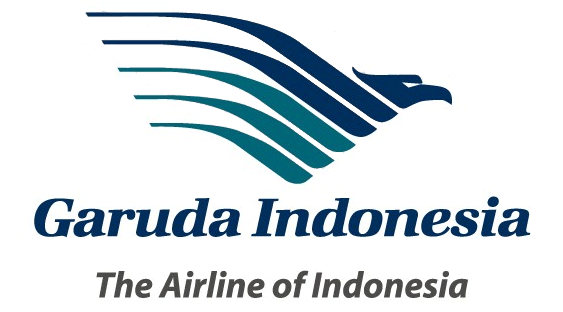
A new corporate identity for Garuda Indonesia was revealed on 23 July 2009. The rebrand was done by Landor Associates, who had also created the previous 1985 identity. The key design element is a revitalized rendering of the country's national emblem, the Garuda eagle, represented by a stylized feather or “nature's wing.”
Designed in 2006, the logo of Qatar Airways features a burgundy oryx on a grey background. Oryx is the national animal of Qatar, and its color in the logo matches the color of Qatar’s flag. The name of the airline is written in English, while the Arabic letters spell out the word “Al Qataria”

The original Lufthansa logo – a flying stylized crane in a circle was created by Otto Firle in 1918. It was officially adopted as the Lufthansa logo in 1954, when Otto "Otl" Aicher and students from his Gruppe E5 at the influential Hochschule für Gestaltung Ulm (Ulm design school), which he co-founded, redrew the crane logo, added the yellow, and introduced the use of lowercase Helvetica Bold as the airline's font. Aicher's design is widely regarded as one of the great airline graphic identities. Disegno magazine described it as "one of the 20th century's most successful and long-lasting corporate rebranding exercises." The blue flying crane on a yellow background made for a stark and dramatic contrast invoking the feeling “free as a bird”.
As part of its rebranding project on 7th February 2018, Lufthansa overhauled its livery, and changed the background of its iconic 100-year-old logo from yellow to blue . The redesign, spearheaded by Lufthansa in-house designer Ronald Wild, and it was the first major change to the world's oldest airline logo in over 50 years. The new image was not well received. Aviation writer Enrique Perrella described it as "bland and pointless", while industrial designer Clemens Weisshaar speaking to Dezeen, described the new livery as "a design belly flop of epic dimensions". "The new Lufthansa identity seems to ignore [Aicher's] legacy," said Weisshaar, "It opts for a corporate blue that comes straight out of a late capitalist nightmare." Weisshaar compared the new livery to that of a "dodgy insurance company" or "a failed bank". "What we'll miss most is one of the most beautiful liveries in the skies, with this unbelievably elegant grey underbody," he added.
EgyptAir’s logo is inspired by the ancient Egyptian mythology, from which it draws the image of Horus, or rather his head. Usually depicted as a man’s body with a falcon’s head, Horus was known as the god of sun, or “Sky god”, so it makes sense that he’s part of an airline logo. EgyptAir has been using this logo since July 2008.
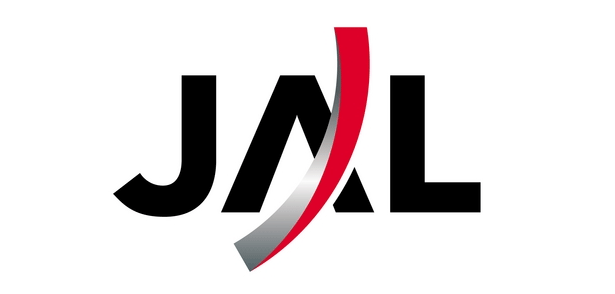
The logo of Japan Airlines (JAL) was designed in 1958 by Jerry Huff. Called “tsurumaru” (“crane circle”), the logo represents a Japanese crane with extended wings. The red color of the logo symbolizes happiness. The idea for the logo came from Japanese tradition, which views the crane as a symbol of long life, prosperity and good health. In the myth of the crane, it is said that the bird can fly high and very long without getting tired, which makes it a perfect symbol for an airline company. However, in 2002 a new, completely different logo was revealed, and it wasn’t very popular nor well-received. Japan Airlines decided to revert to the old design in 2011, and it’s still in use today.

Created by Lindon Leader in 2001, the Hawaiian logo depicts the “island girl” Pualani, also called “Flower of the Sky”. It represents Hawaiian island heritage and the strength, spirit and confidence of its peopl.
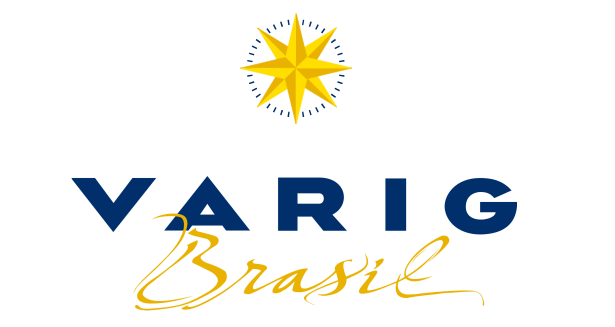
The star that 80 years ago was the symbol of Brazil's Varig airline changed color. The almost golden yellow gave way to the orange of its new parent, Gol, that in March 2007 acquired the company. "It was an appropriate change that translates a bit of Gol's management. The star's gold was a bit of extravagance, which does not fit into Gol's policy, "said Fred Gelli, creative director at Tátil Design, a specialist in brands.
Azul Linhas Aéreas Brasileiras S/A is a Brazilian carrier based in Barueri, a suburb of São Paulo. After the merger with TRIP Linhas Aéreas, Azul tweaked its logo, making the "u" a lighter shade of blue, in a nod to the TRIP logo, which had a differently-colored "i".

Azul Linhas Aéreas Brasileiras S/A is a Brazilian carrier based in Barueri, a suburb of São Paulo. After the merger with TRIP Linhas Aéreas, Azul tweaked its logo, making the "u" a lighter shade of blue, in a nod to the TRIP logo, which had a differently-colored "i".

British Overseas Airways Corporation (BOAC), the new state airline, was formed in April 1940 and operated wartime services under the control of the Air Ministry. In 1946, London Airport was opened officially. A new corporate identity, designed by Landor Associates, was unveiled in December 1984 and in 1986 the airline’s longhaul services moved into the newly-built Terminal 4 at Heathrow. The privatisation of British Airways was completed in 1987 under the leadership of Chairman Lord King. In 1988 BA was merged with Gatwick-based British Caledonian Airways. Designed by Newell & Sorell, 1997 (since merged with Interbrand). “The BA ribbon is a distant echo of the Speedbird symbol first used by Imperial Airways in 1932 and then by BOAC.” Quoted from Logo, by Michael Evamy,
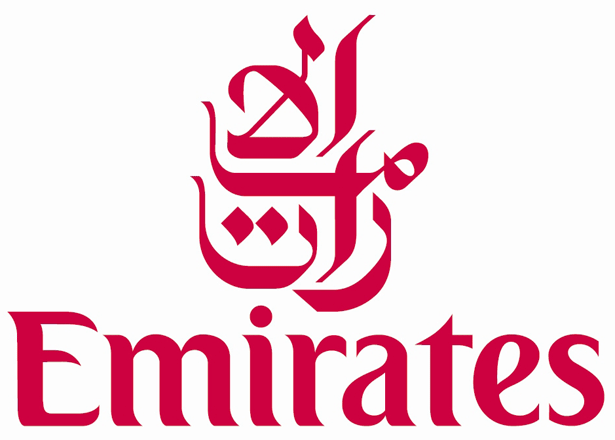
The current Emirates logo (above) is actually a subtle revision of the original, created by Negus & Negus, which consists of the name written in sacred Arabic calligraphic lettering. The word mark in English is a bespoke type, aiming to suggest a personal, yet corporate image.
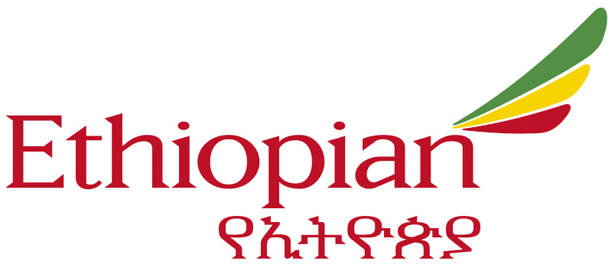
Aer Lingus is an Irish airline company with a logo that dates back to 1938, when the original shamrock symbol was designed by Robert Logan. Shamrock (young clover) is generally considered to be the Irish national symbol, and it’s connected to the legend of Saint Patrick who used a clover to explain the Holy Trinity to the non-Christian Irish people. The current logo of Aer Lingus was created in 1996, and because of its slanted look it’s often called “The Drunken Shamrock”, which invokes the Irish drinking stereotype.

The Ethiopian Airlines has had this logo since the branding campaign called “Vision 2010”, when they also introduced the new motto: “The New Spirit of Africa”. The logo contains English and Amharic text, and the color scheme (red, green, yellow) corresponds to the colors of the Ethiopian flag.
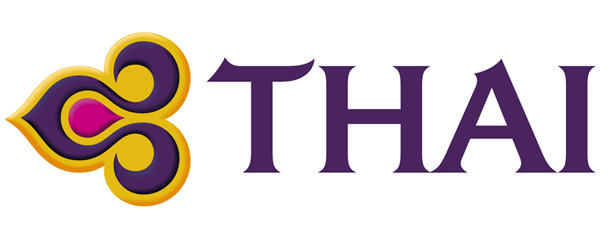
The Thai Airways logo was created by Interbrand and presented in April 2005. It features a colorful ornament, in which the pink part represents a magnolia blossom. The logo gained some unwanted media attention in September 2013, when after a runway accident in Bangkok the airport workers painted over the logo on a damaged plane in an attempt to protect the reputation of Thai Airways.
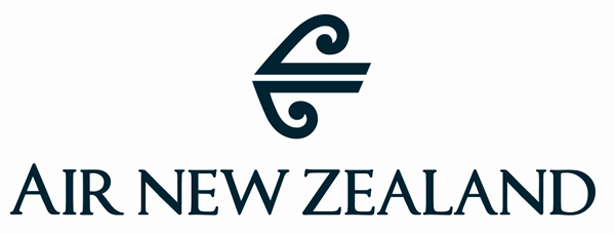
Air New Zealand originated in 1940 as Tasman Empire Airways Limited (TEAL), a flying boat company operating trans-Tasman flights between New Zealand and Australia. TEAL became wholly owned by the New Zealand government in 1965, whereupon it was renamed Air New Zealand. In late 2011, type designer Kris Sowersby was approached by Designworks to work on a new logotype for Air New Zealand. He was contracted to draw new letterforms to complement the iconic koru logo. Designworks had been working closely with Air New Zealand to smartly and iteratively re-brand and re-position the airline across all aspects of their business, from terminals to in-flight teacups

Dan Reisinger, the Yugoslav-born designer, designed the original logo for El Al in 1971. The classic logo interweaves the El Al name in Hebrew and English with the Israeli national flag. Reisinger, received the Israel Prize for Design, was angry that his work is being tampered with as El AL decided to rebrand.
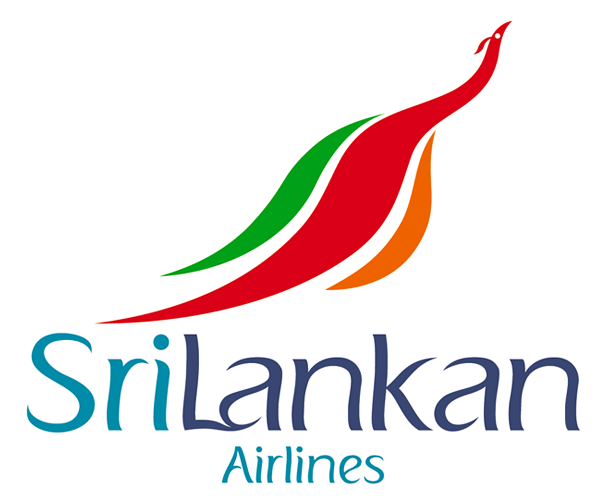
SriLankan Airlines’ logo features a stylized, colorful peacock and an unconventional but elegant typeface. It was revealed as a part of a major rebranding project in 1999. According to Sri Lankan folk tales, a flying machine similar to a peacock once existed, and it was called the Dandu Monara Yanthra. It’s possible that this mythical creature inspired the airline logo. However, a more realistic explanation would be the fact that peacocks are a native species in Sri Lanka.
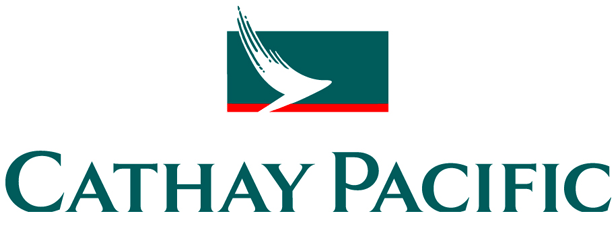
Air China is the flag carrier and one of the major airlines of the People’s Republic of China, that was established on 1988. The Air China logo consists of an abstract phoenix pattern, also the artistic transfiguration of the word “VIP”. The logo was designed by Chinese artist Han Meilin.

In 1995, China Airlines of Taiwan introduced the ‘plum blossom’ logo along with a new corporate identity.

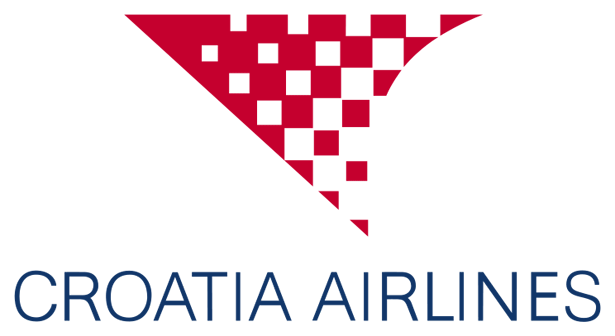


Iberia got a new logo in 2013, when Interbrand redesigned the old one and introduced a custom typeface. They used red and yellow, which are the colors of the Spanish flag, to convey the energy of the Spanish character.


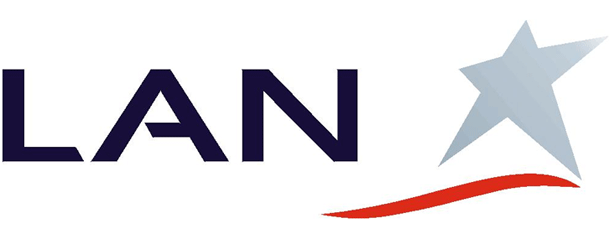
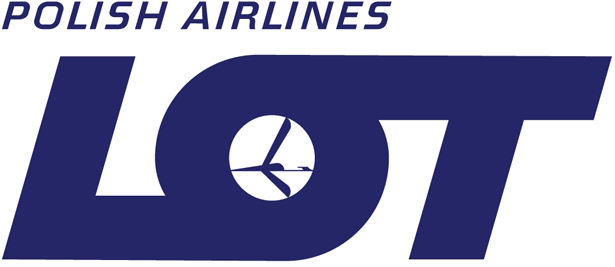

The red dragon, the traditional Chinese symbol of nobility and power was inspired by a legend of the dragon which traveled from Northern China to Hong Kong and created mountains in its path. The logo was created in 1993 with the help of Hong Kong’s Polytechnic School of Design for Dragonair of Hong Kong.

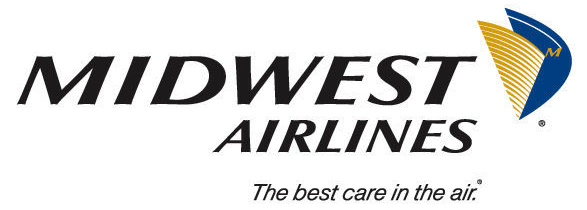
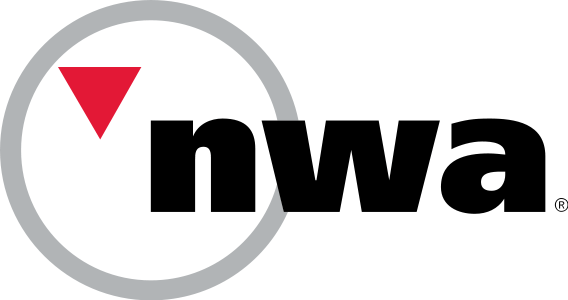
 |
The Korean Air’s logo is called Taegeuk, and it stands for the “ultimate reality from which everything is derived”. It’s also a part of the South Korean flag. Korean Air’s logo was designed in 1984. |
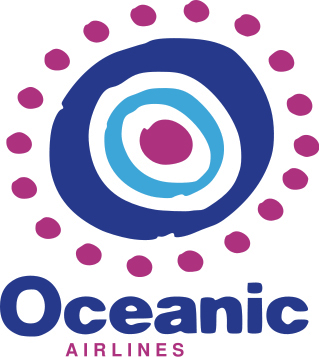


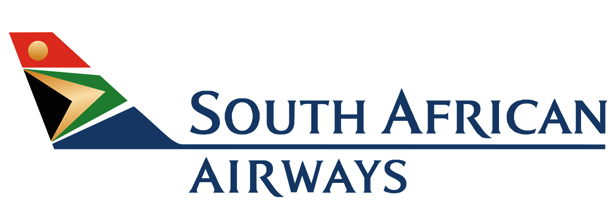
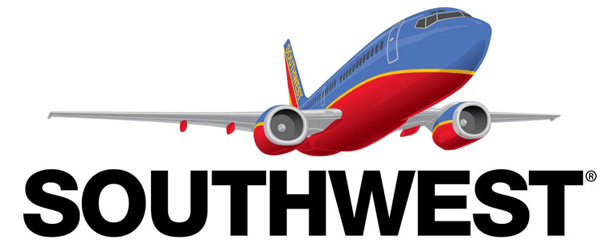
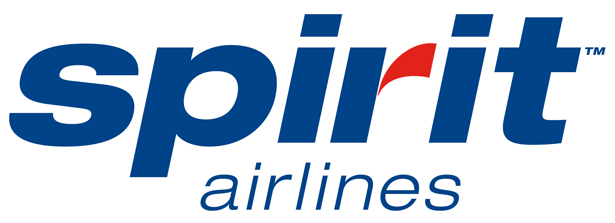
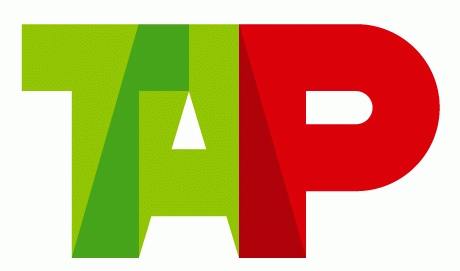

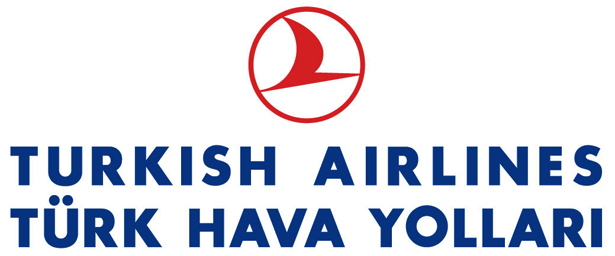



Air Madagascar is the Société Nationale Malgache de Transports Aériens, Société Anonyme. The airline was formed in 1947 to feed into flights by Transports Aériens Intercontinentaux and Air France, and upon the independence of Madagascar, it became the national airline. Initially operating services on domestic routes, the airline saw expansion in the late 1960s and 1970s, when it began international flights to destinations such as France and South Africa. Air Madagascar logo, is based on the traveller's palm (Ravenala madagascariensis), which due to its striking shape and various use, quickly became Madagascar’s heraldic plant. Since 1922, the Ravenala adorns Madagascar’s official seal with its stylized palm leaves. And since the sixties, the silhouette turns up again in the logo of the national airline, Air Madagascar.

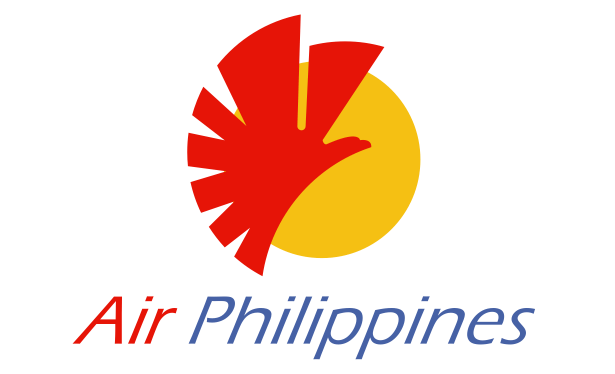 |
With the minor refreshment to the symbol in 2003, James Hogan, president and chief executive of Gulf Air, praised the revitalised falcon logomark: “The restyled falcon, which remains the focal point of our new corporate identity, communicates a synthesis of bold, modern entrepreneurial principles and traditional Arabian values, through what we believe is a powerful and prominent icon for a new era.”


Originally registered as Air Berlin USA, the company was founded in 1978 as a wholly owned subsidiary of Lelco, an American agricultural enterprise head quartered in Oregon. The company got a new logo in January 2008. The airline planned to rebrand with, a stylized image of a bear on the tail, in red against a black and gold background - a clearly West German airline. However, after filing for insolvency, the company ceased operations on October 27, 2017 .
----------------------------------------------------------------------------------
This work is licensed under a Creative Commons Attribution-No Derivative Works 3.0 Unported License.








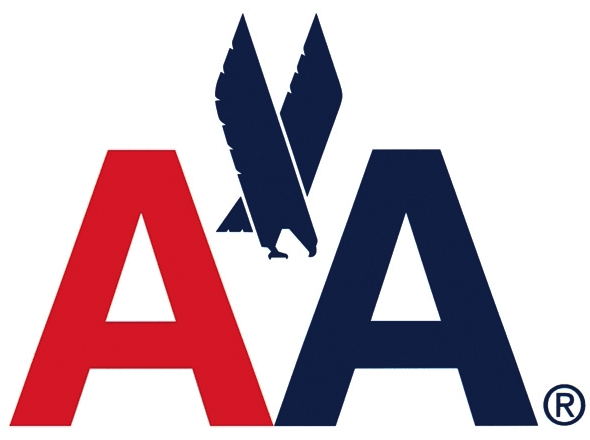









































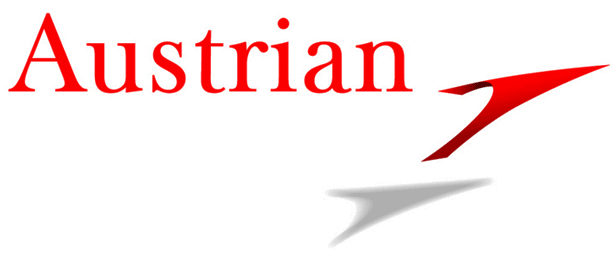



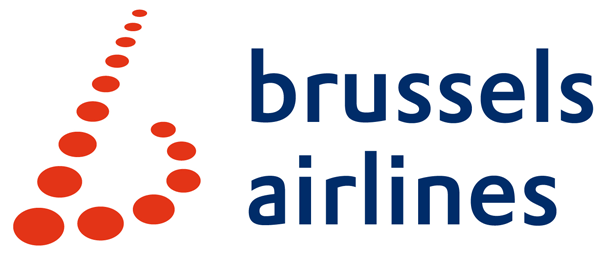
No comments:
Post a Comment